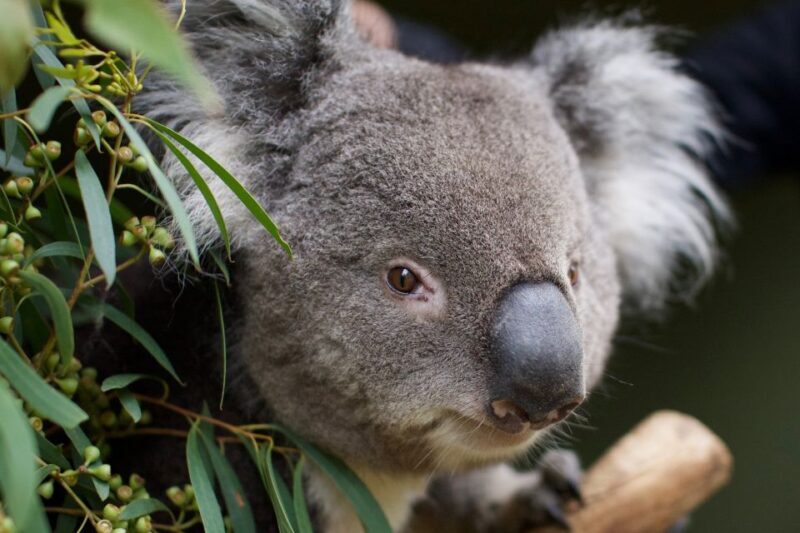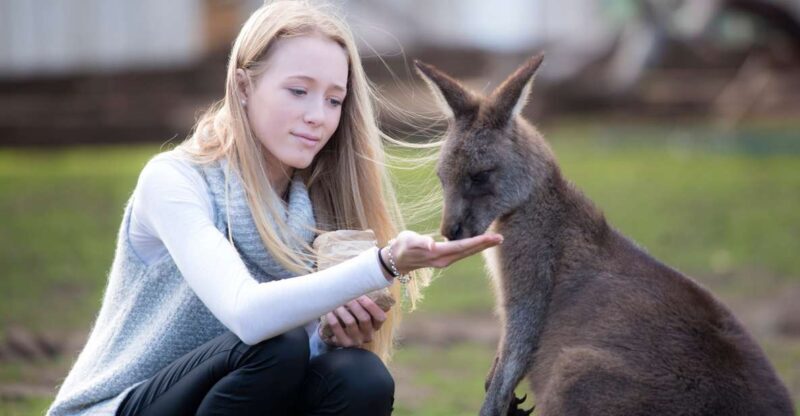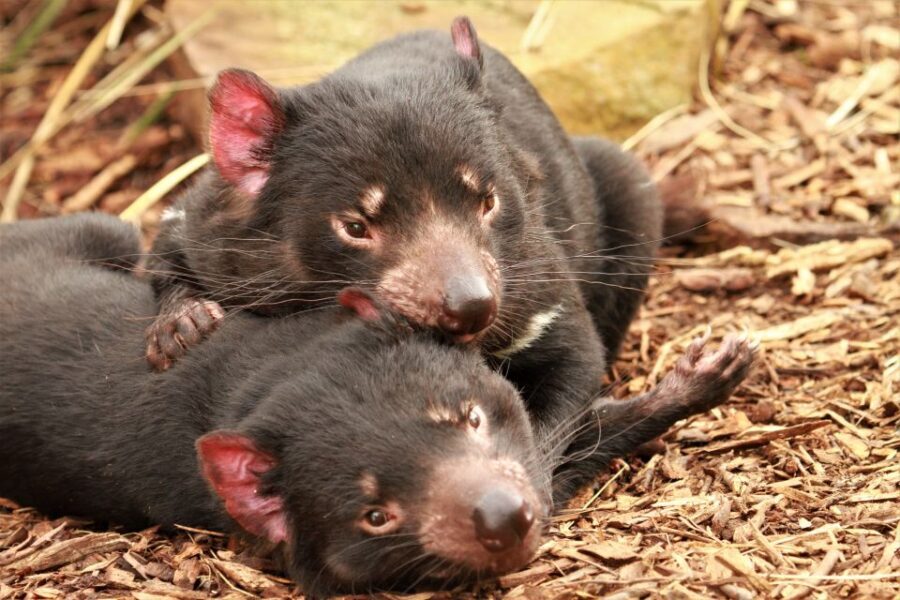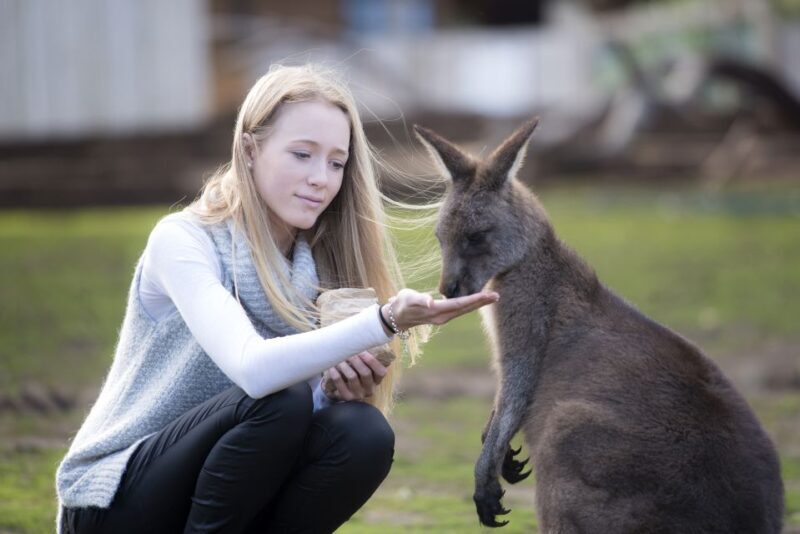Hobart: Admission Ticket to Bonorong Wildlife Sanctuary

If you’re heading to Tasmania and want an authentic experience interacting with native wildlife, the Bonorong Wildlife Sanctuary is a stand-out choice. Located just 30 minutes from Hobart, this sanctuary offers a chance to see some of Australia’s most beloved animals up close—like koalas, wombats, and Tasmanian devils—all while supporting conservation efforts. The ticket costs $23 per person and grants you year-round access, making it a flexible outing whether you’re visiting for a day or planning multiple visits.
What we really love about this experience is the opportunity to feed the kangaroos, who roam freely within the sanctuary, and to learn from knowledgeable guides who share fascinating insights into each species. The second is the chance to see injured or threatened animals being cared for—an honest glimpse into wildlife rescue and conservation efforts.
A small consideration: this experience involves walking around an outdoor sanctuary, so good walking shoes and weather-appropriate clothing are advisable. Also, since transport isn’t included, you’ll need to organize your own way to get there, but the short drive from Hobart makes it quite manageable.
This visit suits families, wildlife enthusiasts, and those wanting a meaningful connection to Australia’s unique fauna. If you enjoy interactive, educational experiences in a relaxed setting, Bonorong will hit the spot.
You can check availability for your dates here:Key Points

- Close encounters with iconic Australian animals like kangaroos and wombats
- Guided tours provide in-depth knowledge about wildlife conservation
- Supporting animal rescue efforts adds a meaningful aspect to your visit
- Feed free-roaming kangaroos and see animals that might otherwise be difficult to encounter
- Year-round access offers flexibility in planning your trip
- Accessible for wheelchairs and families with children
Planning more time in Hobart? We've covered other experiences worth considering.
A Practical Look at Bonorong Wildlife Sanctuary

When we consider what makes a wildlife experience worthwhile, two things stand out: authenticity and education. Bonorong offers both in spades, with a setting that feels genuine and guides who are clearly passionate about protecting Tasmania’s endangered and injured animals.
Location and Accessibility
Just about 30 minutes from Hobart, Bonorong is easy to reach by car. It has on-site parking, making your visit smooth and convenient. Because transport isn’t included in the ticket, you’ll want to plan your trip accordingly—either rent a car or join a day tour that includes transportation.
Price and Value
At $23 per person, the ticket offers a lot of value. It includes admission, a bag of kangaroo food, access to daily guided tours, and the chance to see a variety of animals. The reviews make it clear that many visitors find this a worthwhile spend, especially considering the support for animal rescue efforts. Since tickets are valid for 365 days, it’s also a flexible option if you want to revisit or extend your experience over multiple days.
More Great Tours NearbyWhat’s Included and What’s Not
The ticket includes admission, a bag of kangaroo food, and guided tours. You’ll get a chance to feed the kangaroos, which many reviewers rave about, describing it as a “phenomenal experience.” The guided tours are an excellent way to learn the story behind each animal—Tasmanian devils, wombats, sugar gliders, and others—and to understand the sanctuary’s conservation mission.
Food and drinks are not included, so plan to bring snacks or purchase food onsite if you’re hungry. Also, transfer from Hobart isn’t provided, so driving or arranging a tour is necessary.
The Experience
Once inside, you’ll likely start with a guided tour led by knowledgeable keepers who share fascinating facts about the animals. For example, one reviewer mentioned the “awesome” opportunity to see Tasmanian devils and learn about their plight, which adds depth to your visit. You can also walk through the sanctuary at your own pace, observing and photographing animals like wombats, koalas, and echidnas.
A highlight for many is hand-feeding the kangaroos, who are comfortable and curious. The sanctuary also takes in injured or orphaned animals that might not be able to return to the wild, which adds an emotional layer to your visit. It’s inspiring to see how much care goes into their rehabilitation.
Animal Encounters and Education
The animal encounters are the heart of the experience. You’ll see animals that are otherwise rarely accessible to travelers, such as the Tasmanian devil, which many visitors long to see. For example, one traveler noted, “The Devils were cute and active,” emphasizing how engaging these creatures are in a sanctuary setting.
Guides don’t just show animals—they share stories about why they’re at the sanctuary, their personalities, and the threats they face in the wild. This educational component adds great value, making your visit more meaningful.
The Sanctuary’s Conservation Focus
Bonorong is not just a zoo; it’s a rescue and rehabilitation center. Many animals arrive injured or unable to survive in the wild, and the sanctuary provides a second chance. The staff’s dedication shines through in reviews that mention how much they love their jobs and care about the animals.
This focus on conservation and animal welfare makes your visit feel more impactful than a typical tourist attraction. You’re actively supporting efforts to protect Tasmania’s wildlife.
What the Reviews Say

From “The only wish of our Japanese guests, who were here for 4 days, was to see a Tasmanian Devil,” to “We loved Bonorong. It supports animals and birds that may not otherwise survive,” reviewers consistently praise the knowledgeable staff and the close-up encounters. Many highlight how feeding kangaroos and observing animals in a natural setting transformed their understanding of Australian wildlife.
One visitor described it as “not a zoo but a sanctuary,” which underscores the authentic, rescue-oriented nature of the experience. The friendly staff and the clean, well-maintained facilities also earn high marks, with many noting their emotional connection to the animals.
Who Should Visit Bonorong?
This experience is ideal for families with children, who will love the hands-on nature and the chance to touch and feed animals. It’s also perfect for wildlife lovers keen to learn about conservation efforts. If you’re a photographer, the opportunity to capture intimate moments with kangaroos and devils is priceless.
Those looking for an educational day out that combines animal welfare with fun will find Bonorong fulfilling. However, if you’re seeking a fast-paced, commercial zoo experience, this sanctuary’s focus on rescue and education might feel more authentic—and more rewarding.
The Sum Up
Visiting Bonorong Wildlife Sanctuary offers more than just a fleeting glimpse of Australia’s native animals—it’s a chance to support local conservation efforts while engaging directly with creatures you may have only read about. The guided tours lend valuable context, and the hands-on feeding makes the experience memorable for all ages.
With affordable pricing and year-round access, it’s a flexible option for travelers staying in Hobart. The emphasis on animal rescue and the genuine passion of the staff make it a rewarding stop that leaves a lasting impression.
If you’re passionate about wildlife, enjoy interactive experiences, or want a meaningful way to support conservation, Bonorong is an excellent addition to your Tasmania itinerary. Its blend of education, fun, and purpose makes for a day well spent—and one you’ll talk about long after you leave.
FAQ
Is the ticket valid for multiple visits?
Yes, the ticket is valid for 365 days, so you can visit at different times during your stay.
Are guided tours available daily?
Yes, the ticket includes access to daily guided tours, providing insights about each animal and the sanctuary’s work.
Can I feed the kangaroos myself?
Absolutely. The ticket includes a bag of kangaroo food so you can interact directly by hand-feeding these free-roaming animals.
Is the sanctuary wheelchair accessible?
Yes, the facility is designed to be accessible for wheelchair users, making it inclusive for all visitors.
What animals can I expect to see?
You’ll see Tasmanian devils, wombats, koalas, echidnas, sugar gliders, and parrots among others.
Are food and drinks available on-site?
Food and drinks are not included but can be purchased on-site.
What should I wear?
Comfortable shoes are recommended as you’ll be walking around the outdoor sanctuary. Weather-appropriate clothing is advisable.
Is transportation to Bonorong included?
No, transportation is not part of the ticket. You’ll need to arrange your own drive or join a tour with included transport.
Can children participate?
Yes, the experience is family-friendly, and children especially enjoy feeding the kangaroos and seeing the animals up close.
Are there any restrictions on bringing animals or equipment?
Yes, animals, skateboards, rollerblades, bicycles, or sporting equipment are not allowed, and smoking or vaping is prohibited on-site.
In all, the Hobart: Admission Ticket to Bonorong Wildlife Sanctuary is a thoughtfully priced, engaging, and impactful way to see Tasmania’s wildlife. Whether you’re a wildlife enthusiast or traveling with family, it offers a genuine, memorable experience that supports conservation and educates all who visit.
You can check availability for your dates here:More Wildlife Experiences in Hobart
More Tour Reviews in Hobart
More Hobart experiences we've covered
- Hobart Attractions Bus: HOBART SHORE EXCURSION
- Hobart: 3-Hour City Sightseeing Tour
- Huon Valley Wine & Cider Tour – Hobart & SE Tasmania
- From Hobart: Three Capes Walking Tour – 4 Days
- Historic Richmond Village Half-Day Coach Tour
- Hobart: 4 Day Wild Tasmania Tour
- Hobart: kunanyi/Mt Wellington Explorer Bus Pass
- Hobart: Cascade Brewery Experience
- Hobart: Hastings Cave, Tahune Airwalk and Huon Tasting Trail
- Hobart: Day Trip to Mt Wellington and MONA with Ferry Ride
- Hobart: Historic Lunch Cruise
- Hobart to Cradle Mountain to Launceston
